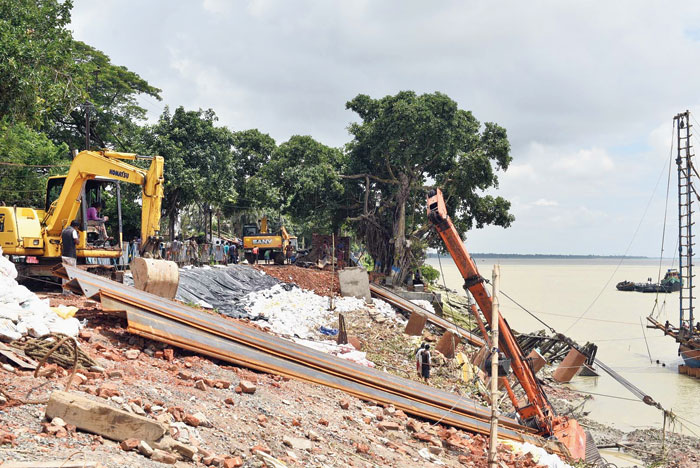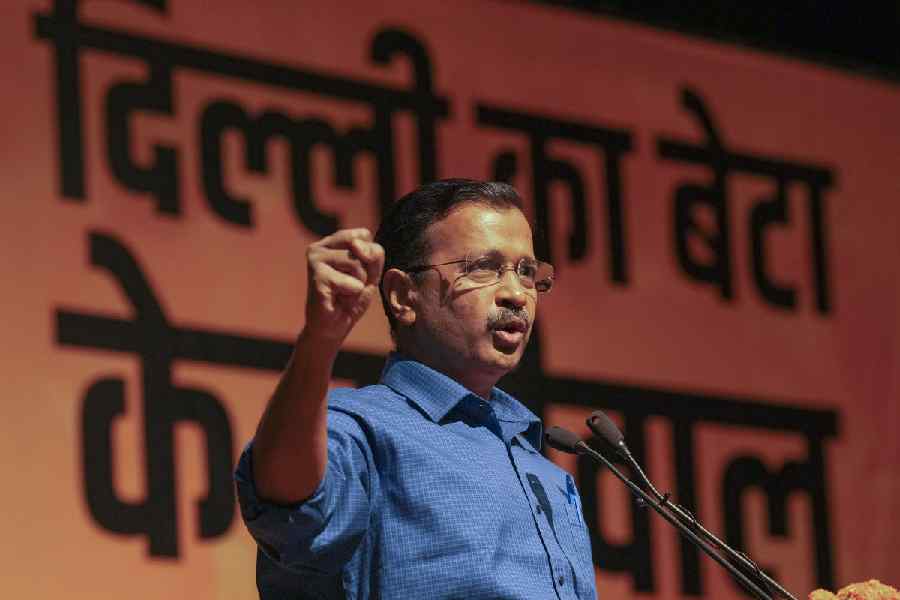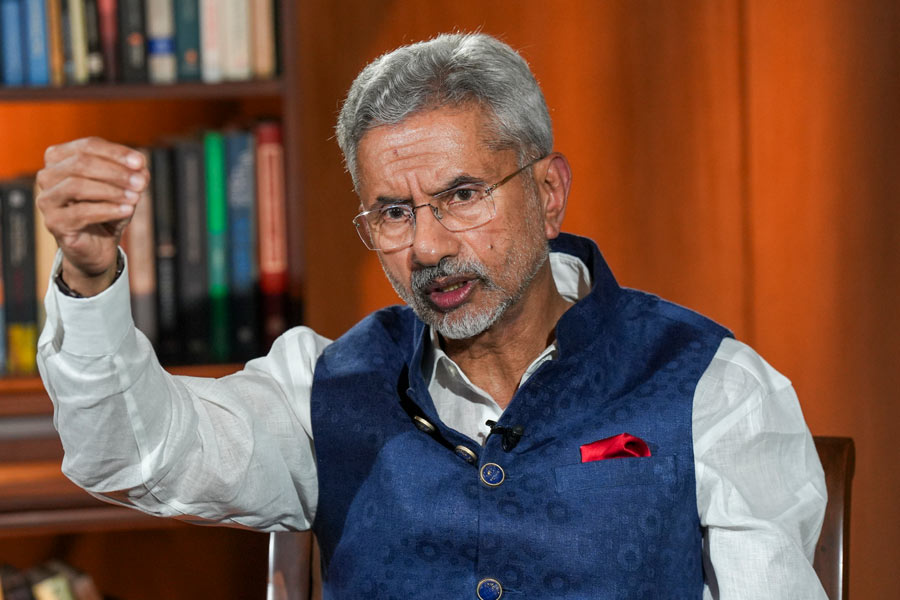An attempt at beautification is sending a shiver down the spine in Diamond Harbour, an important town and a popular tourist spot located by the Hooghly in South 24-Parganas district.
Panic has gripped the residents as they fear that the collapse of a part of the main road — a national highway which is also the embankment on the Hooghly — could lead to the flooding of the locality and a vast area beyond Diamond Harbour.
The collapse took place on August 1 soon after the public works department (PWD) began the construction of a “hanging park” on the bank, which was supposed to be overlooking the river.
The project was planned with the funds of the state tourism department. A plaque says the foundation stone for the river rejuvenation project was laid by Diamond Harbour MP Abhishek Banerjee last year.
The construction of the “hanging park” required the removal of old British-era embankment boulders. The park, which would be like a fancy jetty about 100 metres long, would encroach nearly 10 metres into the river.
The fear of water rushing in has increased sharply this week at the prospect of the “Sarasari Baan”, the spring tide, hitting Gangasagar on Saturday, August 31, with a possible water surge of about 22.5feet.
The “Sarasari Baan” is the highest tide of the year. What the residents fear is the possibility of the water breaching the embankment during the tide.
The morning of August 1, when the bank collapsed, had seen another spring tide, which measured 21.5feet. “On August 1, Diamond Harbour shook as the road collapsed at 6.30am,” said a woman who sells tea from a stall on the bank. “We can’t sleep at night, in fear of the river rushing in,” she added.
The residents cannot understand why the spot was chosen for the construction. It is vulnerable in many ways.
“From the very beginning, people in the neighbourhood expressed concern that the project was not sustainable as there were at least three breaches in the old embankment in the last 11 years. But still the administration pushed it through and it has put the entire Diamond Harbour under the risk of being washed away,” said Debasish Choudhury, convener of a local citizen group that has been protesting the development.
The movement is being conducted by Yukta Mancha, South 24-Parganas, and Janakalyan Samiti, Diamond Harbour.
On Tuesday this week, a group of residents met the sub-divisional officer of Diamond Harbour and demanded that the beautification project that poses a risk to life be scrapped immediately.
Sources said a committee under PWD secretary Arnab Roy is closely monitoring the project and will take a decision on its continuation or closure.
“The people in Diamond Harbour as well as the area beyond are panicking, fearing that the surging river will any day breach the bank and wash away the entire area,” said Arabinda Bharati, a member of the citizens’ movement.
The fear has spread far and wide. Durga Chakraborty (name changed on request), a resident of Sonarpur, located around 40km north of Diamond Harbour, said she and her neighbours are worried about floods. So did Pompa Das, a resident of Mograhat, about 30km north of Diamond Harbour.

The remains of the fort which the Portuguese are said to have built in the 16th century Pictures by Krishnendu Dutta
Scientific findings further indicate the potential damage behind the idea of beautification of Diamond Harbour. The written reply of the ministry of earth sciences to a question on June 28 in Parliament by Trinamul MP Saugata Roy and Congress MP Anto Anthony states that the water level rise at Diamond Harbour, a climate change phenomenon, is the highest in the country.
It is also seven and 16 times higher, compared to Mumbai and Chennai, respectively.
The report points out that between 1948 and 2005, the water level has been rising at an average rate of 5.16mm every year at Diamond Harbour, compared to a national average of 1.3mm every year. “At present, the water level near Diamond Harbour is rising at a rate of 12mm a year,” says Sugata Hazra, professor of oceanographic studies in Jadavpur University, Calcutta.
The old fort at the southern end of the Diamond Harbour embankment, which the Portuguese are said to have built in the 16th century, has disappeared completely under the rising river in the last four decades or so.
At the approach to the fort, ironically, hangs a large tell-tale sign from the government itself. It says: “Ei nodi bipojjonok” (this river is dangerous).
The navigational channel of the river Hooghly is quite close to the bank. This increases the pressure on the bank and makes it even more vulnerable.
Labourers at the site of the embankment collapse said that following the removal of the old boulders, 22 pipe pilings were inserted into the riverbed at a depth of about 30 metres, while they encroached nearly 10 metres into the river.
The workers said that during high tide on August 1 morning, the force of the water uprooted the pilings and part of the bank gave way. Now the road is closed and restoration is underway.
District magistrate P. Ulganathan told The Telegraph that a contractor appointed by the PWD is carrying out the repair under the supervision of the PWD, irrigation department and national highway authorities.
He said the collapse was because of a “natural disaster”. “Engineers have been saying that it happened because of a natural disaster. Apparently, a huge wave triggered the collapse… the 850 metre (project area) is quite dangerous,” the district magistrate said.
Asked why the project had been commissioned in such a dangerous zone and who was accountable, the official said it was a technical matter and accountability came under PWD’s purview.
Environmentalists said encroachment into the river was not permissible under the environment acts as well as Calcutta Port Trust rules.










